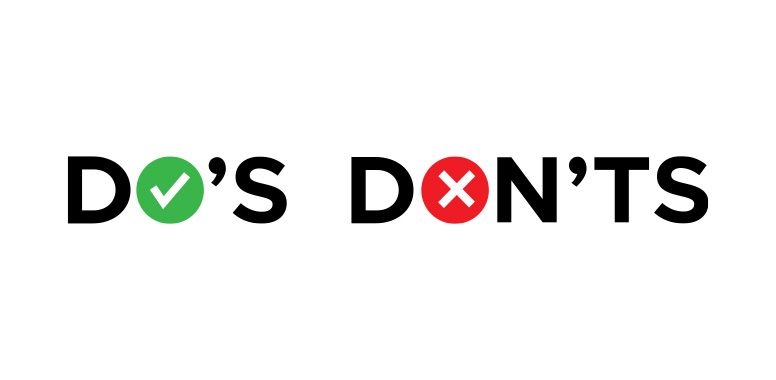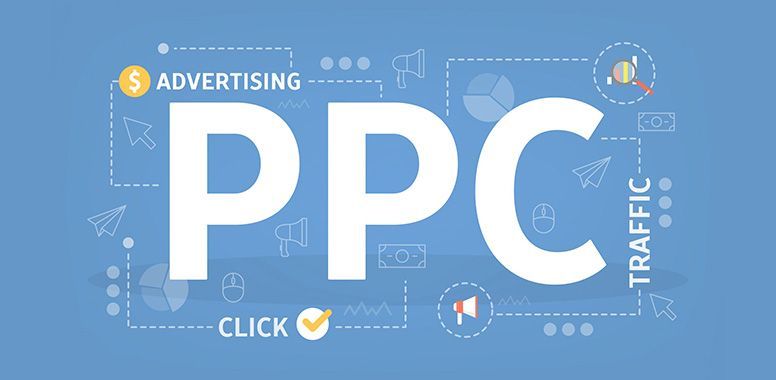Amazon Fall Prime Day 2024: Why Sellers Should Get Ready for October’s Big Sale Event
Amazon has officially announced the return of Prime Big Deal Days on October 8-9, 2024—and this time, it’s bringing a fall twist. This 48-hour sale follows the huge success of the July Prime Day and is set to kick off the holiday shopping season. With exclusive discounts for Prime members, the event will feature early access to holiday deals on everything from top brand products to everyday essentials.
But what does this mean for Amazon sellers? Prime Big Deal Days presents an incredible opportunity for sellers to attract early shoppers, boost sales, and increase their product visibility. Here’s why this event matters and how sellers can prepare to make the most of it.
Why Fall Prime Day 2024 is Crucial for Sellers
1. Kicking Off the Holiday Shopping Season
Prime Big Deal Days is one of the first major sales events of the holiday season, making it a great chance to capture early shoppers. Many consumers are eager to get a head start on their holiday purchases, and this sale gives them the perfect opportunity to do so. For sellers, this is the moment to put your products in front of buyers who are ready to start checking off their holiday shopping lists.
More than just a sale, this event acts as a preview of what’s to come for Black Friday and Cyber Monday. It’s a chance for sellers to test their pricing strategies, gauge product demand, and fine-tune their listings. If your products perform well during Prime Big Deal Days, you’ll have valuable insights to carry into the rest of the holiday season.
2. Boosted Traffic and Visibility
Amazon’s Prime Day events are known for driving massive amounts of traffic to the platform. During the July Prime Day, Amazon saw record numbers of Prime members shopping globally, and the October event is expected to follow suit. For sellers, this means a significant surge in potential customers browsing for deals.
To take advantage of this increased visibility, you’ll need to ensure your products are well-positioned to stand out. If you plan strategically, you can reach a larger audience, attract more buyers, and increase your sales during this high-traffic period.
3. Access to Early Holiday Shoppers
While many consumers wait until November for Black Friday deals, the October Prime Big Deal Days allows sellers to reach holiday shoppers earlier. With the right promotions and discounts, you can capture sales from customers who want to avoid the last-minute holiday rush. By tapping into this early wave of holiday buyers, you’ll have the chance to build momentum and potentially increase your stock of positive reviews before the biggest shopping season arrives.
Additionally, participating in Prime Day can give you a head start in identifying which products are in demand and which strategies work best, helping you fine-tune your approach for the rest of the year.
How Amazon Sellers Can Prepare for Prime Big Deal Days
To make the most of Amazon Fall Prime Day 2024, sellers need to be prepared and proactive. Here are the key steps you should take to ensure your store is ready for the event:
1. Optimize Your Product Listings
Your product listing is your storefront’s first impression, and it’s critical to have it in top shape before Prime Big Deal Days hits. Key areas to focus on include:
- High-quality images: Professional product photos can make your items look more appealing and trustworthy.
- Engaging descriptions: Write clear, concise, and compelling descriptions that highlight your product’s features and benefits.
- Keyword optimization: Research and incorporate relevant keywords into your product titles, descriptions, and bullet points to improve your search visibility.
- A well-optimized listing can significantly increase your chances of converting visitors into buyers, especially when customers are hunting for the best deals.
2. Plan Your Inventory Carefully
Running out of stock during Prime Big Deal Days can be a costly mistake. To avoid losing out on sales, be sure to:
- Stock up on bestsellers: Make sure you have enough inventory of your most popular products to meet the surge in demand.
- Forecast demand: Use sales data from previous Prime Days and holiday events to estimate how much inventory you’ll need.
- Use Fulfillment by Amazon (FBA): If you’re using FBA, send your products to Amazon’s fulfillment centers well in advance to avoid any delays in shipping.
- Proper inventory management is crucial to maximizing your sales potential during this high-traffic event.
3. Offer Competitive Deals and Discounts
Prime Day shoppers are looking for the best deals, so offering competitive discounts is key to standing out. Consider running:
- Lightning deals or limited-time offers to create urgency and drive faster sales.
- Bundled products or BOGO deals (Buy One, Get One Free) to boost your average order value.
- Seasonal and holiday-related items that appeal to early gift shoppers.
- Enticing discounts and promotions will help your products catch the attention of deal-hungry buyers.
4. Maximize Marketing and Advertising Efforts
In addition to having great deals, you’ll need to drive traffic to your listings. Boost your marketing and advertising efforts by:
- Running Sponsored Product ads to increase the visibility of your products.
- Offering Amazon Coupons to attract deal-savvy shoppers.
- Promoting your deals via social media and email marketing to build excitement and direct existing customers to your storefront.
- The more visibility your products have, the better your chances of success during Prime Big Deal Days.
5. Take Advantage of Early Deals
Prime Big Deal Days isn’t just limited to October 8-9. Amazon will start offering early deals in the lead-up to the event, giving sellers the chance to build momentum. By participating in these pre-event promotions, you can increase your visibility and begin driving sales ahead of time, ensuring you’re well-positioned when the main event starts.
In addition, here’s the list of the common customer questions and answers about Amazon’s October Prime Day Deals:
What is Amazon's October Prime Day 2024?
Amazon's October Prime Day, officially called Prime Big Deal Days, is a 48-hour sale event happening on October 8-9, 2024. This event offers exclusive deals and discounts for Amazon Prime members and is designed to kick off the holiday shopping season early with massive savings on a wide range of products.
Who can participate in Amazon’s October Prime Day?
Only Amazon Prime members can access the deals offered during Prime Big Deal Days. If you're not a member, you can sign up for a free 30-day trial of Amazon Prime to take advantage of the event.
What kinds of deals can I expect?
Amazon October Prime Day will feature steep discounts on thousands of products, including electronics, home goods, fashion, beauty products, and more. Popular items from top brands, as well as everyday essentials, will be marked down, and special deals like Lightning Deals will be available for limited times.
How do I find the best deals during Prime Big Deal Days?
You can find the best deals by browsing the Prime Big Deal Days landing page on Amazon. To make sure you don’t miss limited-time offers like Lightning Deals, it’s helpful to:
Use the Amazon app to set deal alerts for products you’re interested in.
Bookmark the deals page and check back frequently throughout the event.
Sign up for email notifications from Amazon for special deals.
Are Prime Big Deal Days as good as July Prime Day?
Yes, Prime Big Deal Days offer similar discounts to Amazon's July Prime Day. However, the October event is designed with a holiday shopping focus, so you might see more deals on seasonal items, gifts, and holiday-related products.
Can I get early access to Prime Day deals?
Amazon often offers early deals in the days leading up to Prime Big Deal Days. Keep an eye on the Amazon website and app to catch these early discounts, and subscribe to Amazon’s newsletter for notifications about pre-event offers.
Can I return items bought during Prime Big Deal Days?
Yes, products purchased during Prime Big Deal Days follow Amazon’s standard return policy, which usually allows for returns within 30 days of receiving the item. However, it’s important to check the return policy on each product page, as some items may have different return windows, especially during holiday events.
Do I need to be an Amazon Prime member to shop Prime Day deals?
Yes, you must be a Prime member to take advantage of Prime Day deals. If you’re not already a member, you can sign up for a free trial of Amazon Prime to participate.
Are there any special payment options or perks during Prime Big Deal Days?
Yes, Amazon often offers additional perks for using its own payment methods, such as:
Amazon Prime Rewards Visa Card: Earn extra cashback or points when purchasing during Prime Day.
Amazon Gift Cards: Look out for promotions where you receive bonuses for purchasing or reloading gift cards during the event.
Can I use Alexa to help me shop on Prime Big Deal Days?
Yes, you can use Amazon Alexa to help with your shopping. You can ask Alexa to show you deals, place orders, and even get early access to select offers by shopping via voice.
Will Prime Big Deal Days have Lightning Deals?
Yes, Lightning Deals—limited-time, limited-quantity offers—are a big part of Prime Big Deal Days. These deals usually last only a few hours or until the product sells out, so if you spot something you want, act fast!
Can I combine other promotions with Prime Big Deal Days offers?
In most cases, Prime Day deals cannot be combined with other discounts or promotions, but you can still use Amazon gift cards and apply any available coupons. Keep an eye on each deal for details.
How can I make sure I don’t miss the best deals?
To ensure you don’t miss out on the best deals during Prime Big Deal Days:
- Set notifications in the Amazon app.
- Use the "Watch a Deal" feature in the app to track upcoming deals.
- Check Amazon’s social media and emails for deal alerts.
- Shop early to avoid missing out on high-demand products that may sell out quickly.
What happens if an item sells out during Prime Big Deal Days?
If an item sells out during Prime Big Deal Days, it may still come back in stock later during the event, so keep an eye on it. For Lightning Deals, once the item is gone, it’s typically not restocked.
Will there be deals on Amazon devices?
Yes, Amazon devices like Echo, Fire TV, Kindle, and Ring products typically receive significant discounts during Prime Day events, so it’s a great time to upgrade your smart home setup.
How do I track my Prime Big Deal Days order?
After placing an order, you can track it via the "Your Orders" section on Amazon’s website or app. If you're a Prime member, you’ll often get free two-day shipping on Prime Day purchases.
These common questions will help both shoppers and sellers navigate Amazon’s Prime Big Deal Days and make the most of the deals and opportunities available during these massive shopping dates.
Final Thoughts: Why Preparation is Key for Amazon Fall Prime Day 2024
Amazon Fall Prime Day 2024 presents a massive opportunity for sellers to boost visibility, capture early holiday shoppers, and drive significant sales. But to truly capitalize on the event, preparation is essential. From optimizing your product listings to managing your inventory and running compelling promotions, sellers need to take proactive steps to get ready for the surge in traffic.
With the holiday shopping season right around the corner, Prime Big Deal Days could set the tone for your success throughout the rest of the year. Start preparing now, and ensure your products are ready to shine during one of the most anticipated shopping events of 2024.
The countdown to October Prime Day is on—are you ready?


